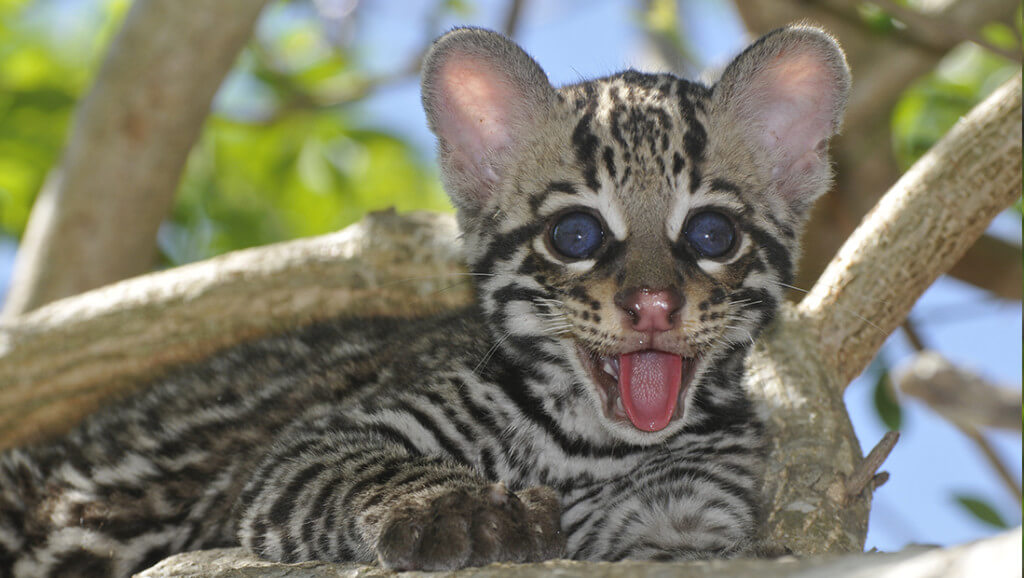The Ocelot
Scientific Name: Leopardus pardalis
Distribution: The ocelot is found in various regions of the Americas, ranging from southern United States to northern Argentina. Its distribution encompasses a wide range of habitats, including tropical forests, savannas, mangroves, and jungles.

Ocelot History: From Adversity to Hope
Several years ago, a young ocelot was removed from its natural habitat by unknown individuals. Unfortunately, it found itself in a heart-wrenching situation: kept as a pet in a household. Its diet was inadequate, being fed cow’s milk which is unsuitable for a feline like him. We are unaware of what happened to its mother and how it ended up in such a situation.
The luck of this ocelot changed when officials from MINAE confiscated it in Bajo Rodríguez de San Ramón. In 2014, it arrived at the Natuwa Wildlife Sanctuary with the corresponding transfer permit. Unfortunately, its condition was concerning: its bones were weak and started fracturing due to the lack of nutrients in its poor diet. The absence of essential calcium from maternal milk led to decalcification in its body.
It is regrettable how the lack of knowledge and proper care affects animals extracted from their natural environment. Fortunately, this ocelot had the fortune of arriving at the Natuwa Wildlife Sanctuary, where our team of nutritionists and experts worked tirelessly to nurse it back to health. However, due to its fragile state and young age, reintroducing it to its natural habitat has become a challenge.
Currently, the ocelot resides in a spacious enclosure within the sanctuary, specifically designed for its needs. It is surrounded by environmental enrichment, including trees, plants, and platforms that provide a stimulating environment. Although it is doing well, it still faces issues with its hips and limbs due to the malnutrition it experienced during its time as a pet.
Fortunately, it now lives a dignified life, free from pain, and receives proper nutrition through the care and supplements provided by the sanctuary. Although its release into the wild has become complicated, we are committed to providing a safe home and the best possible care. Its story inspires us to continue fighting for the conservation and protection of these beautiful endangered species.
Natural History of the Ocelot
The ocelot is a medium-sized feline with fur ranging from yellow to brown, adorned with rosette-shaped spots of varying size and pattern. It is a solitary and nocturnal predator, with exceptional climbing and leaping abilities. Its diet mainly consists of small mammals, birds, reptiles, and fish.
In terms of reproduction, the female ocelot has a gestation period of approximately 79 days and gives birth to a litter of one to three cubs. The cubs are born with spots and closed eyes, relying entirely on their mother for survival during the early months of life. As they grow, they learn to hunt and become independent at around 10-12 months of age.
The ocelot plays an important role in maintaining the balance of ecosystems where it resides by regulating prey populations and contributing to biological diversity. However, due to habitat destruction, illegal hunting, and the fur trade, this species is threatened in many parts of its distribution.
Conservation efforts are vital to preserve the natural habitats of ocelots, as well as to combat poaching and illegal trade. Only through collaborative conservation endeavors can we ensure a secure future for this beautiful species.


